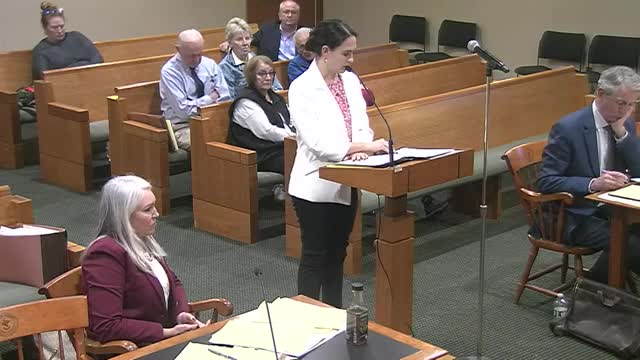Building height variance sparks debate over golf course safety
November 04, 2024 | Summit, Union County, New Jersey
This article was created by AI summarizing key points discussed. AI makes mistakes, so for full details and context, please refer to the video of the full meeting. Please report any errors so we can fix them. Report an error »

In a recent government meeting, discussions centered around a proposed variance for an existing building associated with a local golf course. The building, located over 400 feet away from the nearest residential area—approximately the length of a football field—has been in place for nearly 25 years. The proposal includes replacing outdated underground fuel tanks with safer above-ground alternatives, which would enhance accessibility in case of leaks or emergencies.
The applicant argued that the height of the accessory building necessitates a variance, which they believe can be justified under the hardship variance criteria. They emphasized that strict adherence to regulations would impose undue hardship on the development of the site. The slight reduction in height proposed aims to bring the structure closer to compliance without necessitating a complete demolition and rebuild, which the applicant deemed unsustainable.
Additionally, the applicant addressed concerns regarding the presence of an accessory building without a principal structure on-site, asserting that the golf course itself functions as a principal structure. They maintained that the existing building's longevity and the proposed improvements align with sustainable development practices.
To secure the variances, the applicant must demonstrate special reasons for their request, referencing municipal land use law. The meeting highlighted the balance between regulatory compliance and the practical needs of maintaining and improving community facilities.
The applicant argued that the height of the accessory building necessitates a variance, which they believe can be justified under the hardship variance criteria. They emphasized that strict adherence to regulations would impose undue hardship on the development of the site. The slight reduction in height proposed aims to bring the structure closer to compliance without necessitating a complete demolition and rebuild, which the applicant deemed unsustainable.
Additionally, the applicant addressed concerns regarding the presence of an accessory building without a principal structure on-site, asserting that the golf course itself functions as a principal structure. They maintained that the existing building's longevity and the proposed improvements align with sustainable development practices.
To secure the variances, the applicant must demonstrate special reasons for their request, referencing municipal land use law. The meeting highlighted the balance between regulatory compliance and the practical needs of maintaining and improving community facilities.
View full meeting
This article is based on a recent meeting—watch the full video and explore the complete transcript for deeper insights into the discussion.
View full meeting
